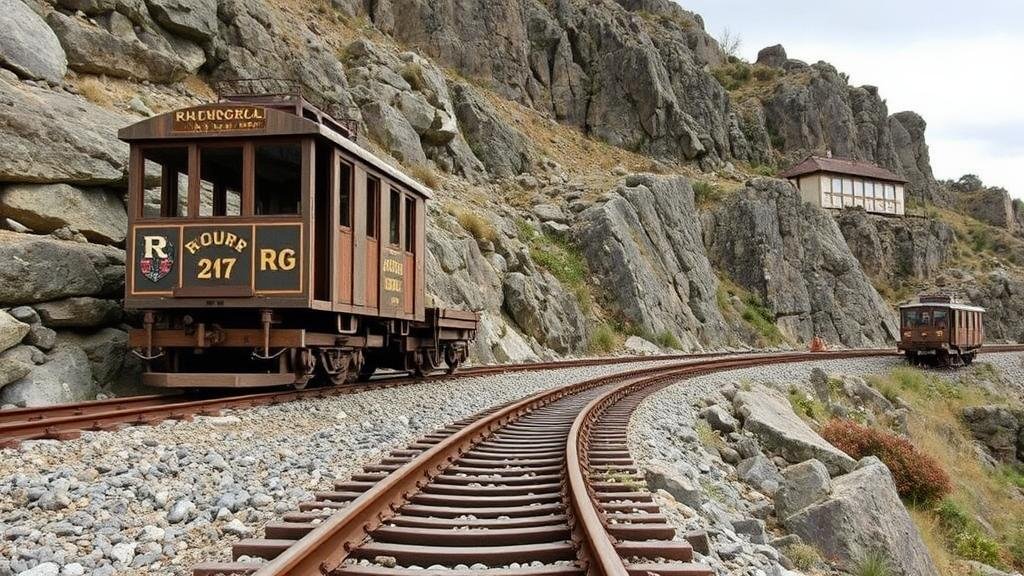Exploring Historical Quarry Tramways for Stoneworking Relics
Exploring Historical Quarry Tramways for Stoneworking Relics
The quarrying industry has played a critical role in the development of infrastructure and architecture across many civilizations. Among the various methods of transporting quarried materials, tramways have been significant in facilitating the movement of stones from extraction sites to processing locations, or directly to construction sites. This article explores the historical significance of quarry tramways, their engineering, and the stoneworking relics they have helped preserve, using specific case studies from different geographic regions.
The Origins of Quarry Tramways
The earliest known use of tramways in quarrying can be traced back to the Roman Empire (27 BC – AD 476). Romans employed wooden rail systems to transport stones, notably in the construction of monumental structures like the Colosseum in Rome. The invention of the tramway revolutionized stone transportation, allowing for the movement of heavier loads over greater distances without the need for extensive manpower.
Engineering Features of Quarry Tramways
Quarry tramways were primarily designed for efficiency. They consisted of a series of wooden or metal tracks along which wheeled carts would travel. design often included features such as:
- Inclined Planes: These were used to ascend or descend steep terrains, utilizing gravity to move loaded carts downhill.
- Turntables: Equipped at junctions, these allowed carts to change directions without needing to unload.
- Spur Lines: These short extensions connected the mainline to the quarry entrance, facilitating access to raw materials.
The advancement of technology in the 19th century introduced iron and then steel rails, leading to greater durability and load capacities. By the mid-20th century, many tramways were mechanized, employing powered locomotives instead of animal haulage.
Notable Case Studies
This section assesses a few exemplary quarry tramway systems that still exist today, showcasing their historical and engineering significance.
1. The Penrhyn Quarry Tramway
Located in North Wales, Penrhyn Quarry was one of the largest slate quarries in the world during the 19th century. tramway, established in 1800, spanned over 12 miles and played a crucial role in transporting slate to the port for shipping. The tramway utilized gravity-fed systems and included various inclined planes.
In 2004, the Penrhyn Quarry was recognized as a historic landmark, underscoring its importance in industrial heritage.
2. The Doultons Quarry Tramway
Another notable example is the Doultons Quarry Tramway in Scotland, operational during the late 1800s. It was instrumental in transporting sandstone to the local brickworks, significantly contributing to urban architecture in Glasgow and Edinburgh.
Historical records indicate that the tramway’s innovative design allowed for the transportation of over 30,000 tons of stone annually, highlighting the efficiency of such systems during that period.
Preservation and Archaeological Importance
The remnants of quarry tramways serve as crucial archaeological and educational resources, embodying the historical methods of stoneworking. Several organizations and local governments recognize the importance of preserving these structures, and ongoing efforts include:
- Archaeological Surveys: Systematic documentation of trolley paths, carts, and associated stonework.
- Heritage Trails: Restoration of certain sections of tramways for public educational use.
Such initiatives foster a deeper appreciation of industrial heritage and serve as a tool for understanding the evolution of the quarrying industry.
Challenges and Considerations
Efforts to preserve historical quarry tramways often encounter challenges, including:
- Environmental Impact: Overgrowth and natural erosion can obscure or damage remaining structures.
- Funding Limitations: Preservation projects frequently compete with other heritage initiatives for limited funding and resources.
Engaging local communities in preservation efforts is essential. Community involvement can raise awareness, attract tourism, and generate vital funds for restoration projects.
Conclusion
Exploring historical quarry tramways provides invaluable insights into the engineering marvels and socio-economic factors that shaped urban landscapes. study and preservation of these relics are not just important for historical scholarship, but they also have significant educational and cultural implications. As stewards of heritage, it is crucial to advocate for the continued preservation and appreciation of these vital links to our past.
To wrap up, by recognizing the historical value and legacy of quarry tramways, we can ensure that future generations understand the complexities of stoneworking and its integral role in our cultural heritage.



